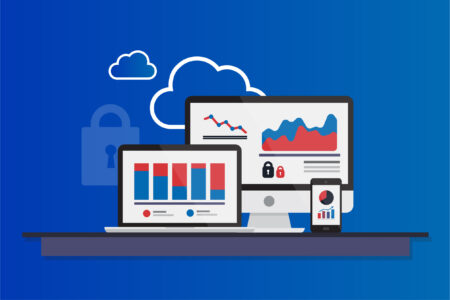
Blog
How does it make you feel every time a personalized advertisement pops up on your feed? Does it unnerve you when your inbox overflows with specific “suggestions” for you from different brands? Do you feel like you’re being stalked and that this is a breach of privacy?
Well, you’re not the only one who feels this way.
Data-related roadblocks, data silos, customer authentication and consent management, and compliance are some of the issues that a brand can face when it comes to reaching their customers. With around 83% of people concerned about their data privacy, brands are trying to find an effective solution. You don’t want to lose loyal customers by harassing them with unnecessary emails. Not to mention, if an issue is escalated legally, that’s another nightmare.
What is Customer Data Hub?
A Customer Data Hub collects, organizes, and centralizes data from various platforms across a customer’s journey. The sole purpose of this hub is to integrate data from both internal and external sources and act as a central repository. Be it structured or unstructured data, this hub gathers all the information. It’s a cloud-based solution that helps a brand understand each customer in depth. Brands understand the importance of maintaining a centralized and highly scalable solution that gives them the edge. Organizations must stay competitive and ahead of their time with a solution that reduces risk, increases opportunity, and improves customer satisfaction.
Why choose Customer Data Hub?
With Customer Data Hub, customers don’t have to worry about a breach of privacy as it monitors their preferences and dislikes. CDH enforces this across all platforms to make sure that their privacy and personal data is respected. It’s the customer who oversees what they want others to see and what they don’t. Not only does this create trust but it also eliminates one of the biggest threats that companies have been facing. So far, companies have resorted to unnecessary notifications. Customer Data Hub is the solution for all.
How do you establish CDH?
It is important to align the customer data and establish CDH by implementing first-party data to establish the customer’s identity. This allows brands to store all the information and migrate it into the new centralized repository. This is very helpful as it can be applied to marketing, sales, and service, maintaining the balance.
However, brands must recognize the pitfalls beforehand. It’s more effective if customer data is implemented from one perspective within the organization. Then, the data can be transferred related to other perspectives into the platform while working on a 360-degree view.

CDH already tracks a customer’s behavior without being the nosy neighbor. However, a business won’t benefit from cart abandonment. You need to take steps without being called out. If somebody adds a product in the cart and leaves, the marketing team can act, analyze the data, and work on a follow up email. They’ll adhere to approaches which is more customer centric and assesses their needs. There is no need to worry about another silo of data. The unique customer identifier in the CDH links the first party data to generate a unique profile as a customer interacts with a brand. This allows brands to repeat the process from all perspectives including marketing, sales, or service, and ultimately, end up with a 360-degree view.
Not only does the customer have the option to consent to this but the process is highly beneficial for budding organizations. Generating a unique customer behavior and tying unidentified customer data to first party is a crucial step. Everyone wants to satisfy their customers and brands are choosing CDH to reach that goal. CDH development doesn’t start without integrating first party data that customers have agreed upon sharing and building a 360-degree view. This allows more transparency and customers feel that their concerns are more heard and validated.
CHECK OUR SAP SERVICES
Why CDH? Let’s take a look at the benefits:
CDH is becoming the new symbol of business transformation. Customer Data Cloud is the new definition of delivering seamless customer satisfaction across all platforms without the breach of privacy. This can bridge the gap and give the brand a chance to build a loyal customer base. This manages digital identities, tracks preferences, and monitors consents through first-party data without prying.
The business has the chance to identify customers and build profiles based on their unique requirements and incorporates this across all channels. The customers are complying to share this data and thus, the company has approached it with absolute transparency. This is also easily manageable as all the information is stored in one place and reduces cost. This unique arrangement provides more security and revenue growth.

Data collection is easy but storing it is more costly. This makes it difficult for other departments to operate and ultimately, slows down the entire process. The cost effective and easiest approach is Customer Data Hub. Imagine a cloud solution that offers a simplified approach to analyze the data and build unique customer profiles to deliver relevant results in no time without the unnecessary complications.
It’s important to understand a customer’s needs. We can deliver value only when we know the right fit for a particular customer. CDH is becoming a key component for brands in this area.
Let’s be real. An organization needs to collect data to have a customer base. But why go overboard and lose the trust of loyal customers? Just collecting basic data is not relevant at all. Brands are aiming to build unique profiles individually and cater to their needs. This makes the customer unique, and they tend to hold on to your brand.
Once the CDH is in place, it manages the data efficiently and creates profiles based on their shared information. Each customer is unique and requires special attention. The individuation is crucial. An effective customer database is gathered in an omnichannel fashion and is created on a permission-based manner. Creating a hub that tailors strategies and uses software to manage the data across all platforms is the future of digital revolution. Does a company really want to miss out on this while their competition takes the lead?
If you have any questions or any comments regarding Customer Data Hub, please write to us. Visit our contact page at: https://bit.ly/3r0T8WF
Take a look at some of our other works: https://bit.ly/3NCaPFG